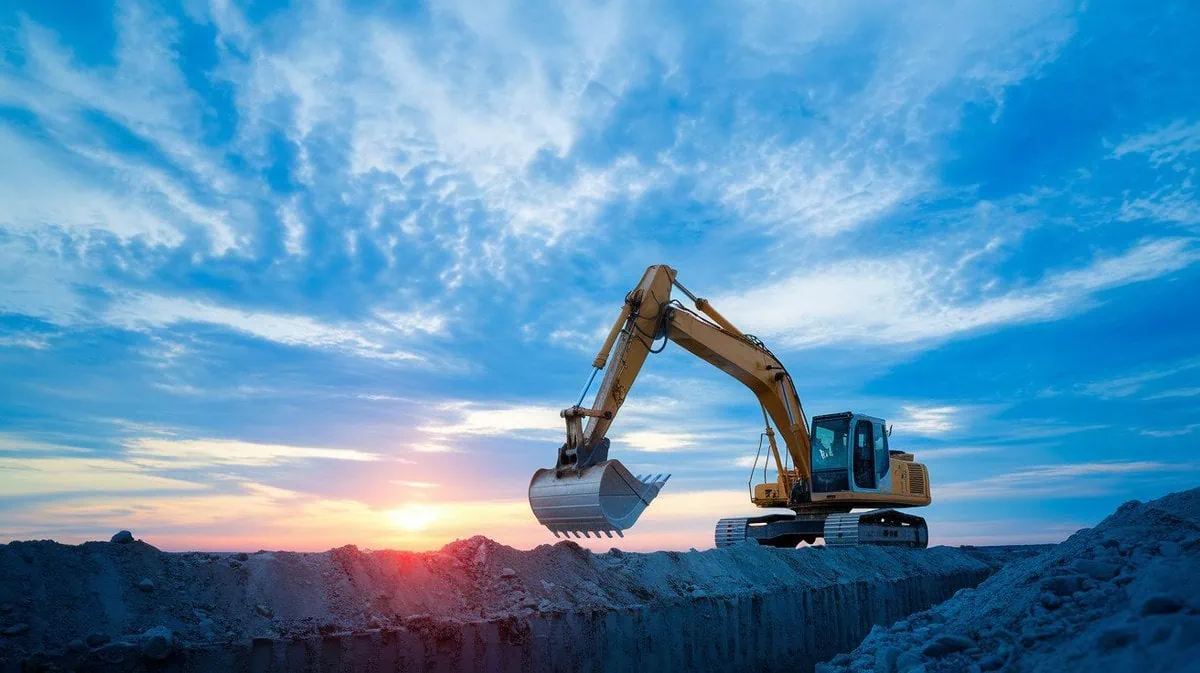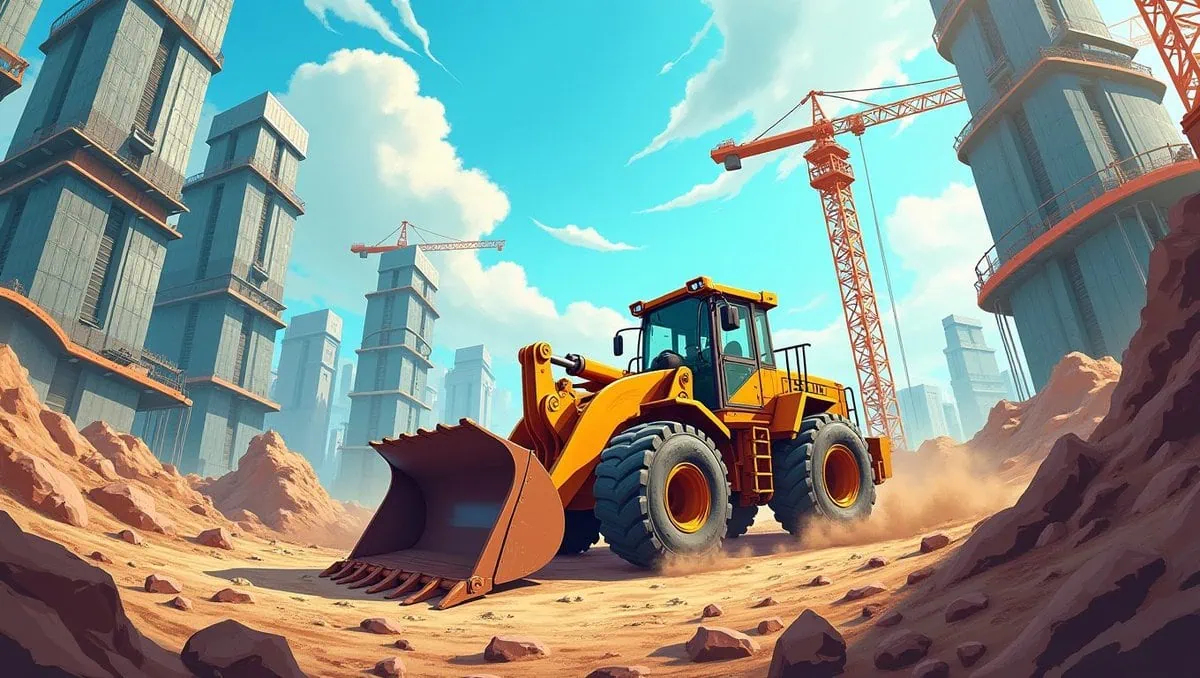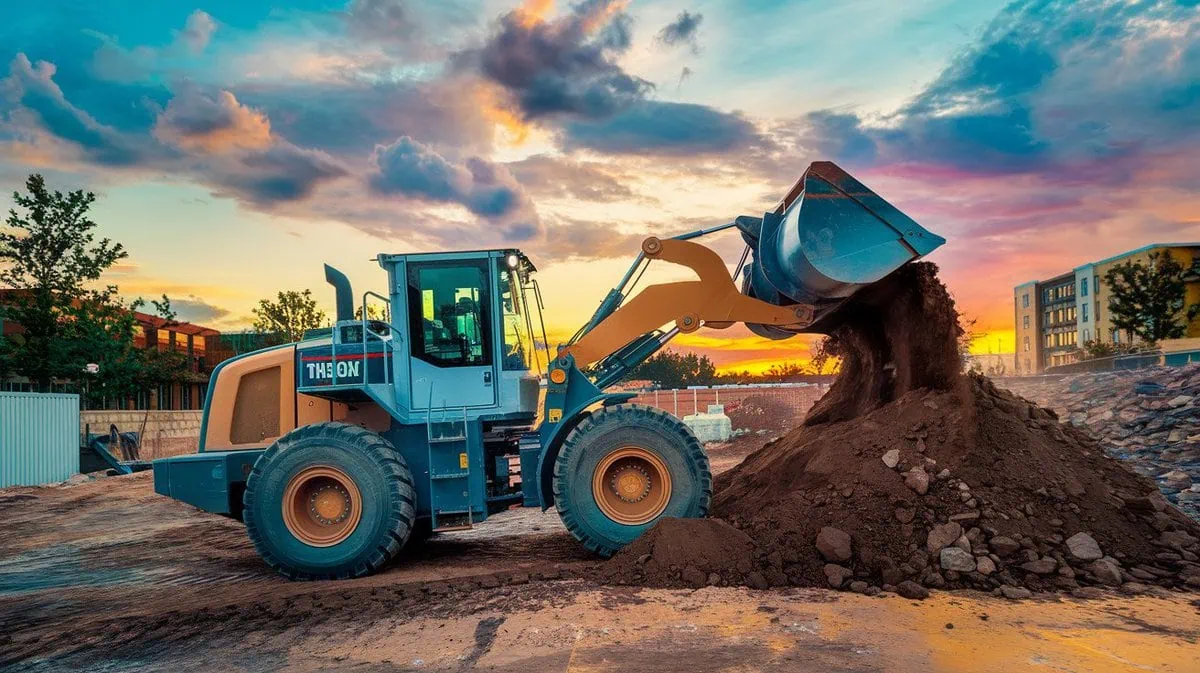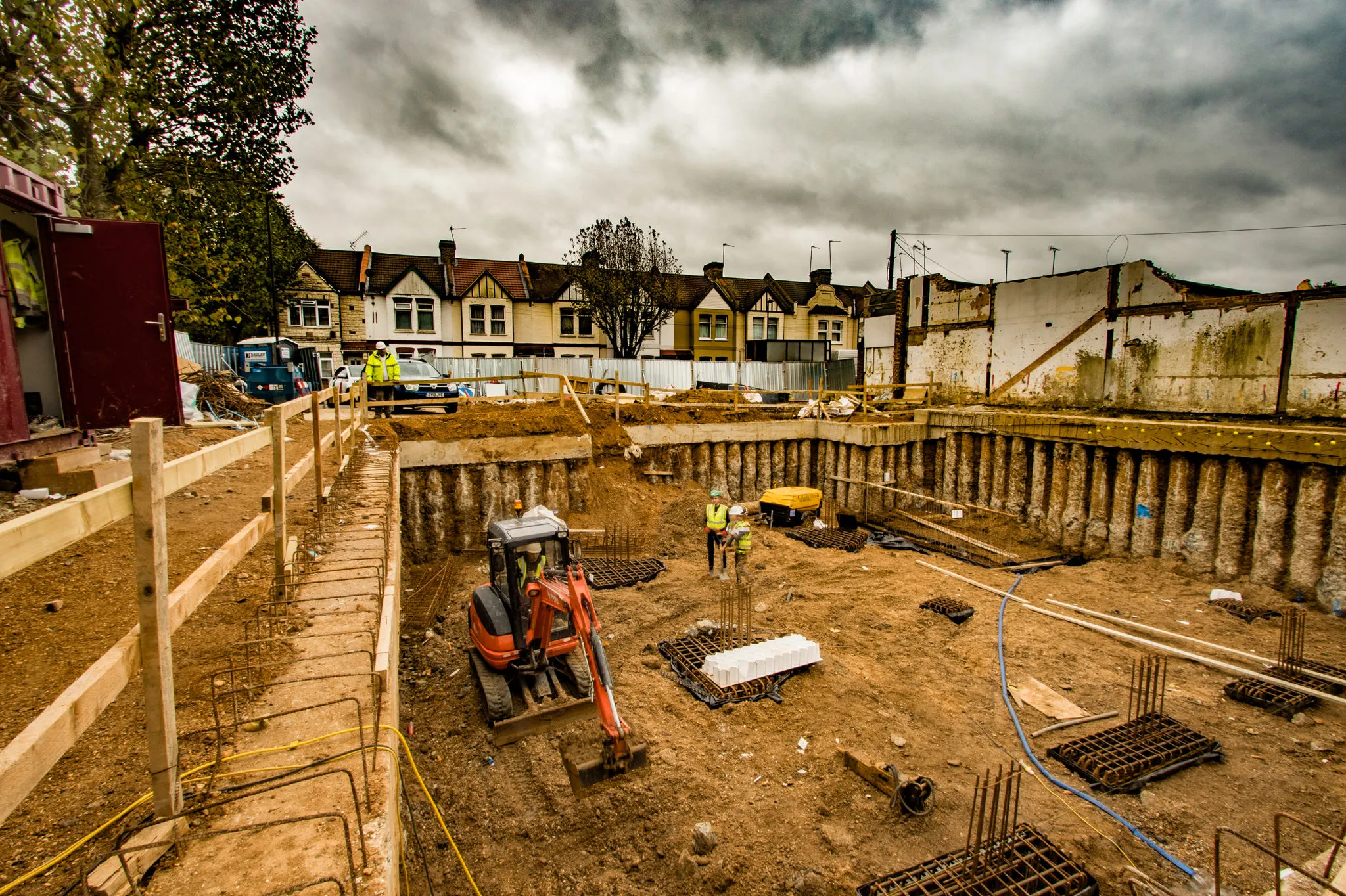Excavation is a critical process in almost every construction or engineering project. The types of excavation you choose can make or break the success of a project, affecting timelines, budgets, and overall project quality. By understanding the different types of excavation and how they are applied, you can ensure that your project progresses smoothly and efficiently. From creating a solid foundation to improving drainage systems, knowing when to use each type of excavation is essential for any construction professional.
Explore the 11 most common types of excavation: earth, rock, underground, channel, bridge, roadway, foundation excavation, trench excavation, borrow excavation, dredging excavation, cut and fill excavation. Each type plays a pivotal role in various engineering and construction projects, ensuring stability, functionality and durability.
Now, let’s dive deeper into each of these types of excavationto better understand their specific applications and importance in construction.
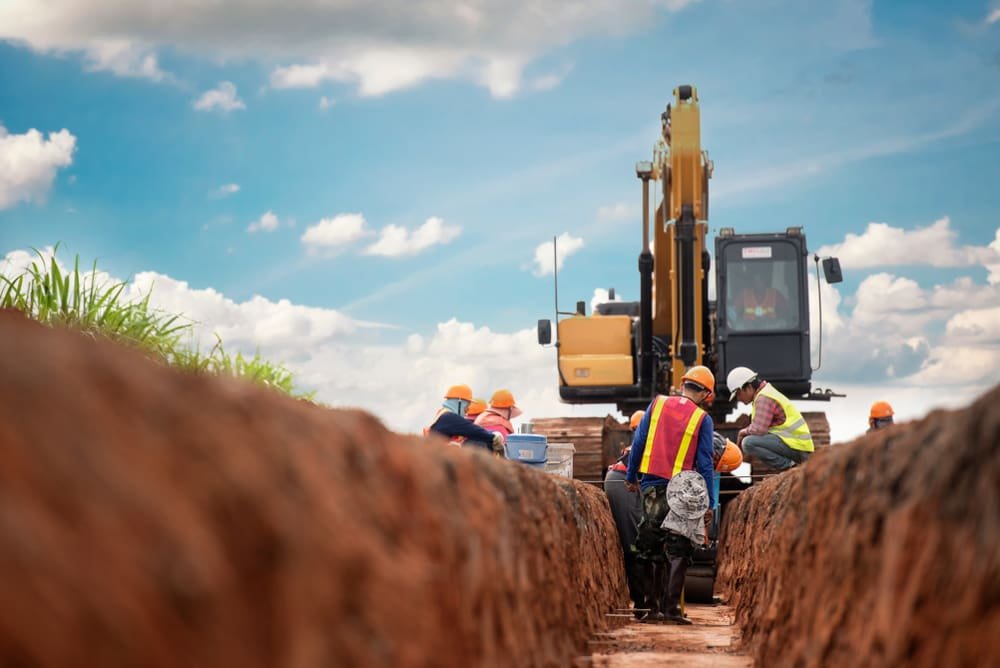
What Is Excavation and Why Is It Important?
What is excavation
Excavation refers to the process of removing earth, rock or other materials from a site to prepare it for construction, mining or other purposes. It is an essential part of most building, infrastructure and mining projects. Excavation is needed to create foundations, tunnels, roads, and more. Understanding the importance of excavation is the first step in choosing the appropriate types of excavation for your project.
O importance of excavation
Excavation plays a crucial role in the success of any construction project. The types of excavation used such as earth, rock or trench excavation, determine how well a site is prepared for further construction. Proper excavation ensures that the land is stable and level, creating a solid foundation for buildings and infrastructure. Without effective excavation, projects may face delays, safety risks, or structural issues.
Each of the types of excavationserves a unique purpose depending on the project’s needs, soil conditions, and intended outcome. For example, trench excavation is ideal for utilities, while foundation excavation is critical for constructing stable bases for structures. Additionally, proper drainage achieved through excavationprevents water accumulation, which could otherwise weaken foundations and compromise the entire project.
In short, excavationis the first and most essential step in preparing a construction site, ensuring it is level, secure, and capable of supporting the next stages of development. The correct type of excavationcan make all the difference in ensuring a successful and timely project completion.
The 11 Types of Excavationand Their Applications
Now that we’ve established what excavation is and why it’s essential, let’s explore the 11 types of excavation commonly used in construction and civil engineering. Each types of excavation serves a specific purpose and has its own set of techniques, materials and safety concerns. Understanding these will allow you to choose the best types of excavation method for your project.
1. Earth Excavation
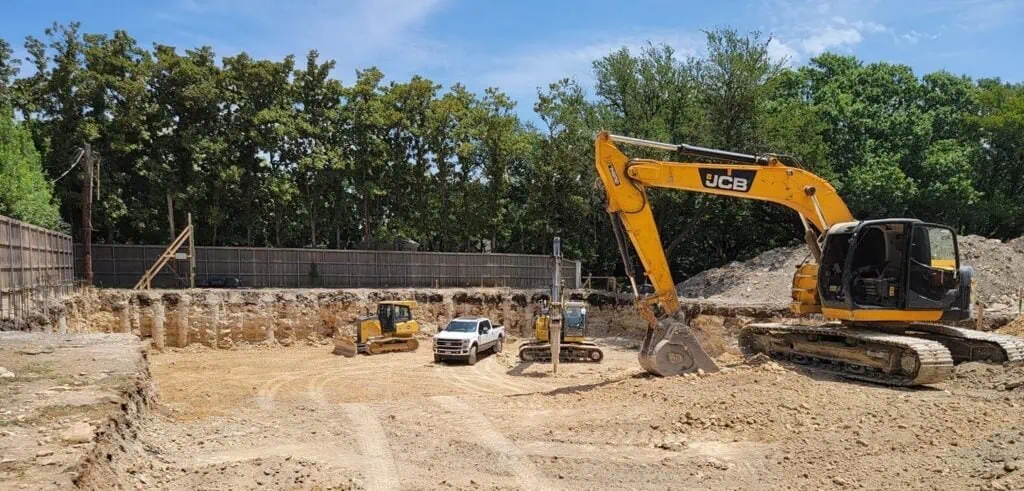
Earth excavation is the most common types of excavation, which involves the removal of soil or earth from a construction site. It is used for preparing foundations, roadways, or other structures requiring a stable base. The technique involves heavy machinery to scoop out and remove soil, ensuring a stable base for further construction activities.
Application:
- Building foundations: Preparing the land for foundations of residential, commercial and industrial buildings.
- Road construction: Leveling the ground to create smooth, durable road surfaces.
- Site preparation for landscaping: Creating a flat, clean area for landscaping or outdoor facilities.
Important Considerations:
- Proper drainage is crucial to prevent water accumulation, which can lead to soil erosion.
- Always mark and protect underground utilities to avoid damaging them during excavation.
- Soil testing is essential to ensure its stability and prevent future settlement or shifts.
2. Rock Excavation
When you encounter solid rock or very hard materials, Escavação de rochas becomes necessary. This excavation type is more complex and may require explosives or heavy machinery to break the rock into manageable pieces.
Application:
- Tunneling for highways or railways: Excavating tunnels that require cutting through rock to create passageways.
- Mining and quarry operations: Extracting rock for use in construction materials or other industrial applications.
- Foundation preparation in rocky terrain: Creating stable, level foundations when working with rocky soil or land.
Important Considerations:
- The use of explosives requires strict safety protocols to minimize the risk of injury or unintended damage.
- Managing rock debris and dust is essential to maintain a safe and clean environment.
- Specialized machinery such as rock drills, hydraulic hammers, or blasting equipment is needed to break down rocks effectively.
3. Underground Excavation
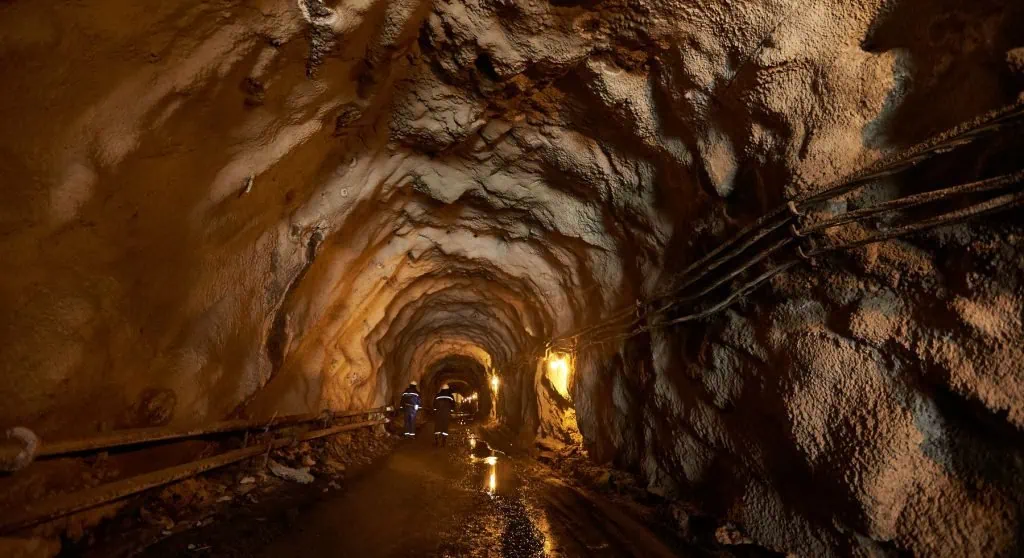
Underground excavation involves digging below the earth’s surface to create tunnels, subways, underground storage or other subterranean structures. This excavation type requires specialized equipment due to the added challenges of working below ground, including issues like ground stability and ventilation.
Application:
- Subways and tunnels: Creating transportation corridors or utility passageways beneath cities.
- Underground utility installation: Installing pipes, cables, or conduits beneath roads or existing structures.
- Mining and mineral extraction: Digging tunnels or shafts to access mineral deposits or underground resources.
Important Considerations:
- Proper ventilation and lighting are essential to provide a safe working environment in confined spaces.
- Ground stability must be continually monitored to prevent collapses or accidents.
- Support structures like rock bolts or tunnel liners are often needed to reinforce underground spaces.
4. Channel Excavation
Channel excavation is the process of creating or modifying a waterway or channel to facilitate water flow. It is often used in agricultural irrigation, flood control or water transportation systems. This excavation type aims to reshape the land to allow water to flow efficiently and to control the movement of water through natural or man-made pathways.
Application:
- River dredging: Clearing and deepening rivers or streams to make navigation easier.
- Agricultural irrigation: Creating channels for irrigation to supply water to crops in agricultural regions.
- Stormwater drainage systems: Excavating channels to help prevent flooding by improving water runoff.
Important Considerations:
- It is important to manage sediment removal and disposal effectively to prevent clogging or erosion.
- Consider the ecological impact, as channel excavation can affect local wildlife, aquatic life, and surrounding ecosystems.
- Proper planning for efficient water flow is crucial to avoid blockages and ensure smooth drainage.
5. Bridge Excavation
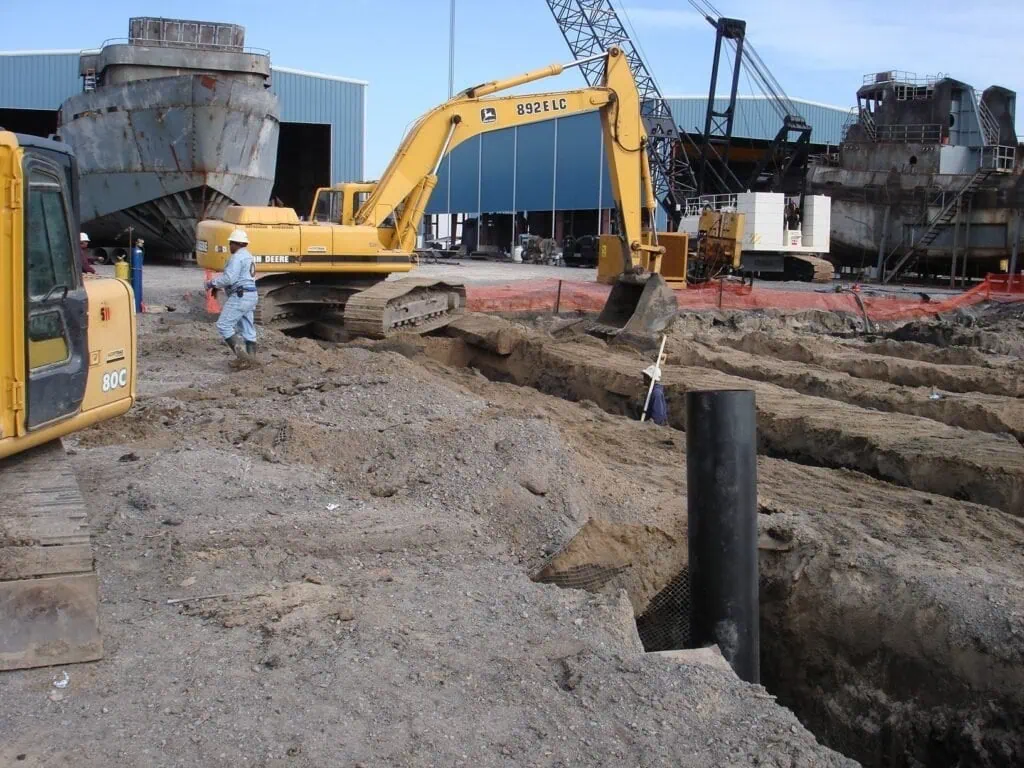
Bridge excavation is a critical type of excavation used in the construction of bridges and other structures over rivers, highways, or valleys. This form of excavation focuses on preparing the foundation areas where bridge supports, piers, or abutments will be placed. Bridge excavation is necessary to create a solid, stable foundation that ensures the long-term durability and safety of the structure.
Application:
- Pier foundation construction: Digging deep to set the foundation for bridge piers, which will support the weight of the bridge.
- Abutment excavation: Creating space for the bridge’s abutments that connect the bridge to the land and distribute weight to the surrounding soil or rock.
- Support structure excavation: Excavating to prepare areas for support structures that keep the bridge elevated and stable.
Important Considerations:
- Equipamento: Specialized excavation machinery such as pile drivers or augers may be required to perform deep and precise excavations in preparation for bridge foundations.
- Soil composition: The type of soil and underlying rock must be considered to determine whether additional stabilization methods (e.g., shoring or piling) are needed for the bridge excavation.
- Safety protocols: Excavation for bridges typically involves deep digging, which requires careful attention to safety measures to prevent accidents, including proper shoring to avoid collapse.
- Environmental factors: If a bridge is being constructed over a water body or in an environmentally sensitive area, extra precautions are necessary to minimize disruption to the surrounding ecosystem.
6. Roadway Excavation
Roadway excavation involves clearing and preparing the land for road construction, ensuring a smooth and durable surface for vehicles. This excavation type is vital for creating pathways for transportation, whether it’s a highway, street, or other paved surface.
Application:
- Highways and streets construction: Creating paths for transportation by leveling the land and removing obstacles.
- Railway bed preparation: Excavating areas for railroads to ensure stable tracks.
- Parking lot construction: Preparing land for paved surfaces and vehicle storage.
Important Considerations:
- Proper drainage is essential to prevent flooding or erosion that could damage the roadway.
- Stabilizing the soil may be necessary to avoid future settling of the surface.
- Heavy machinery, such as bulldozers and graders, is needed to handle large-scale excavation work efficiently.
7. Foundation Excavation
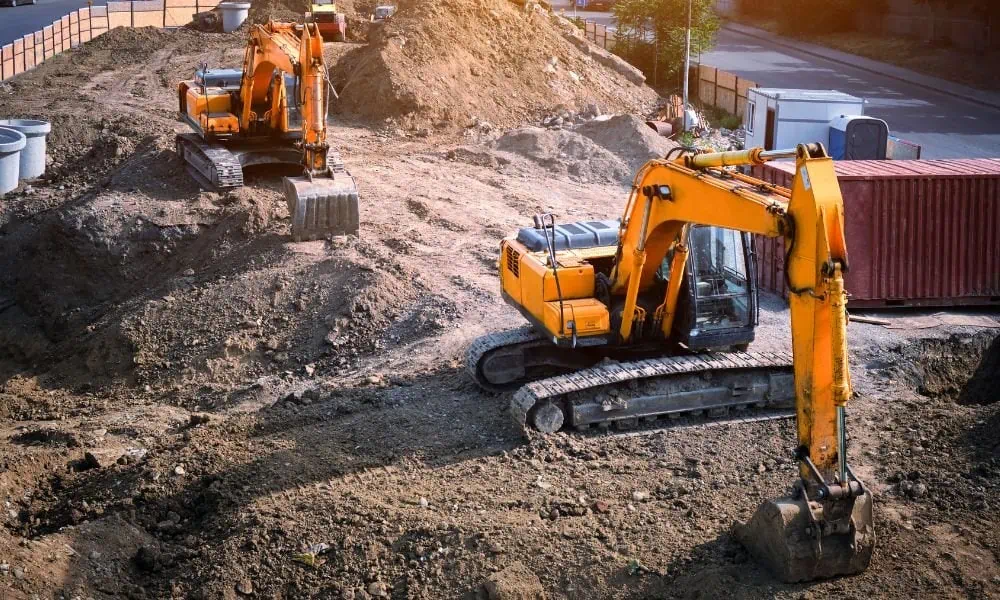
Foundation excavation is the process of digging to create a base for a building or other structures. It involves removing soil, rocks or other materials from a specific area to prepare the foundation for construction. This excavation type is crucial for ensuring the structural integrity of the building, as it provides a stable base for the construction.
Application:
- Building construction: Excavating for foundations of residential or commercial buildings, including multi-story buildings and industrial plants.
- Bridge foundations: Preparing the ground for bridge pillars and other foundational elements.
- Retaining walls: Excavating trenches for constructing retaining walls that prevent soil erosion.
Important Considerations:
- Excavation depth and width depend on the design specifications and type of foundation (e.g., slab-on-grade, basement, or deep foundation).
- The surrounding soil must be evaluated for load-bearing capacity to avoid foundation settlement.
- If groundwater is present, it may be necessary to employ dewatering techniques or install proper drainage systems to prevent water from affecting the foundation.
8. Trench Excavation
Trench excavation refers to the process of digging narrow but long trenches in the ground, typically used for installing utilities like water pipes, electrical cables, or sewage systems. This excavation type is typically shallow but can be deep, depending on the project’s requirements.
Application:
- Utility installation: Laying water, gas, or electricity pipelines, sewer lines, and communication cables.
- Drainage systems: Installing stormwater or drainage systems to prevent flooding.
- Foundations for infrastructure: Excavating for the foundations of small structures like fences or low walls.
Important Considerations:
- The trench needs to be stable and safe to avoid collapsing during construction, requiring proper shoring or bracing.
- Excavated material should be stored at a safe distance to avoid interfering with the work area.
- Proper planning is necessary to avoid damaging existing utilities or infrastructure already present in the trench’s path.
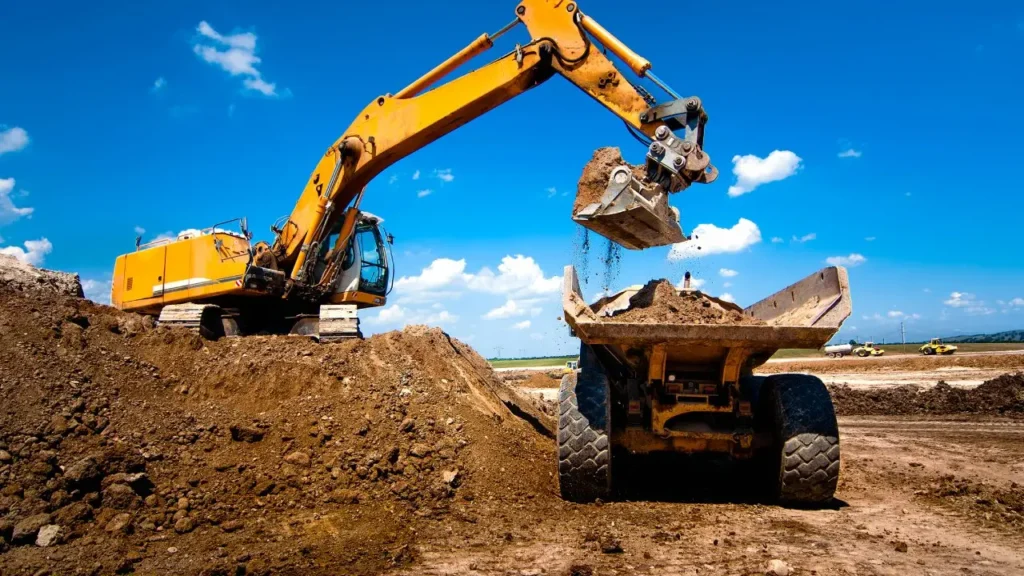
9. Borrow Excavation
Borrow excavation involves extracting soil or other materials from one location (borrow pit) and transporting it to another area for use in filling or leveling. The borrow material is typically used to raise the ground level or to fill in low-lying areas, making it suitable for construction projects such as roads, embankments or landscaping.
Application:
- Road construction: Filling depressions or low-lying areas to ensure a level base for the roadbed.
- Land reclamation: Raising the ground level for the construction of buildings or agricultural land.
- Backfill for foundations: Using borrow material to fill around foundations or other structures after excavation.
Important Considerations:
- The quality of the borrow material is crucial, as it needs to meet specific standards for compaction and stability.
- The distance from the borrow pit to the excavation site will affect the cost of transportation.
- The environmental impact of borrowing material, including any effects on surrounding ecosystems, must be considered and mitigated.
10. Dredging Excavation
Dredging is a specialized excavation type that involves the removal of sediment, debris and other materials from the bottom of bodies of water, such as rivers, lakes, harbors or the ocean. This process is often done to improve navigation or to reclaim land for construction projects.
Application:
- Port and harbor maintenance: Removing silt and debris to ensure safe passage for ships.
- Land reclamation: Creating new land areas by removing water sediments and raising the waterbed level.
- Waterway deepening: Ensuring that shipping lanes are deep enough for large vessels to pass safely.
Important Considerations:
- Dredging must be done with caution to avoid disturbing the aquatic ecosystem, particularly sensitive species living in the water.
- Sediment disposal must be managed properly to avoid polluting nearby areas.
- Special equipment, such as dredgers and suction pipes, is required to remove and transport materials from the waterbed.
11. Cut and Fill Excavation
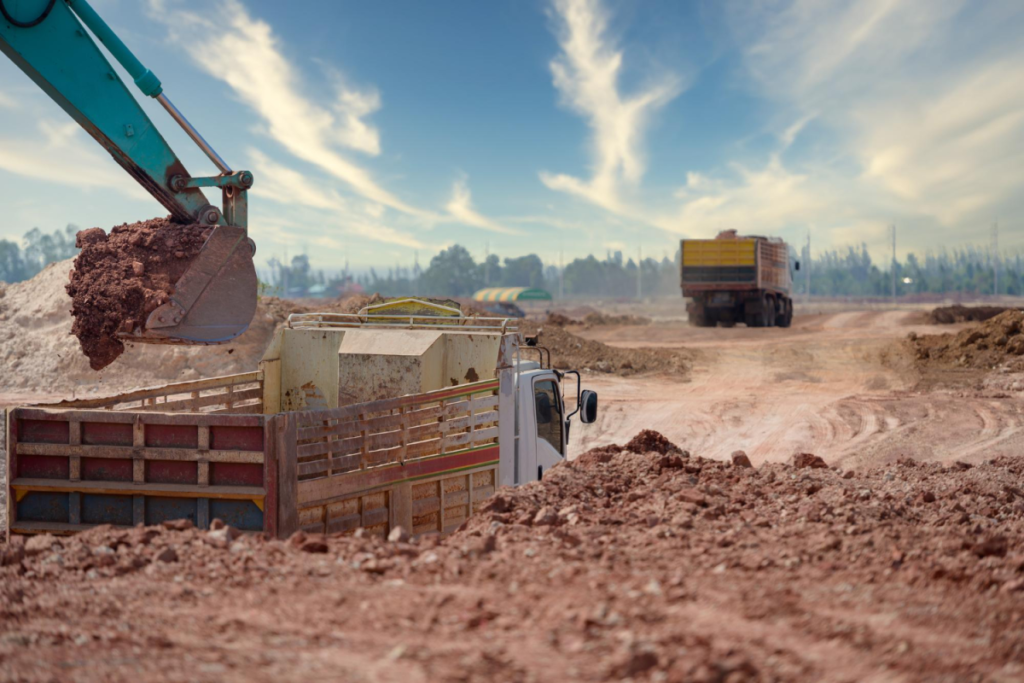
Cut and fill excavation refers to a method where material is cut from one area (cut) and transported to another area (fill) to level the land. It is commonly used in areas where the terrain needs to be leveled for roads, embankments or other construction projects.
Application:
- Road and railway construction: Levelling uneven terrain to create a smooth, stable surface for transportation infrastructure.
- Landscape grading: Modifying the land for landscaping purposes, including leveling grounds for parks or golf courses.
- Site preparation: Adjusting the land to create a flat surface for building foundations.
Important Considerations:
- The amount of cut and fill required needs to be carefully balanced to avoid excessive excavation and material transport.
- Proper planning is necessary to avoid creating areas of low elevation that could lead to water pooling or drainage problems.
- The excavation site must be analyzed for soil composition, as certain soils may need stabilization to prevent future shifts.
How to Choose the Right Type of Excavation for Your Project
Choosing the right types of excavation is crucial to the success of any construction project. Understanding the different types of excavation and their applications is essential for making informed decisions that ensure efficiency, safety, and cost-effectiveness. Factors such as soil conditions, excavation depth, safety measures, and equipment availability all play a significant role in selecting the most appropriate excavation type.
Soil and Terrain Considerations
The type of soil and terrain directly influences the types of excavation required. For example, earth excavation is commonly used in soft soil environments, whereas Escavação de rochas is necessary for rocky or hard ground. If the excavation is underwater, specialized underwater excavation methods must be employed. Utilizing the correct types of excavation based on soil conditions helps avoid delays and extra costs.
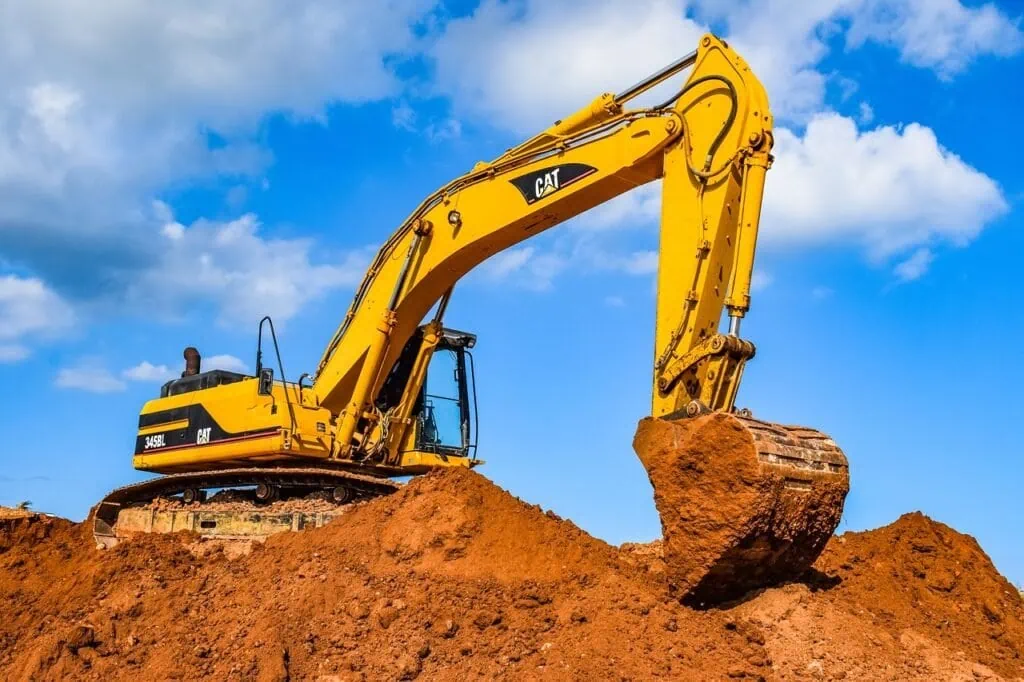
Excavation Depth and Project Scale
Another key factor when choosing a excavation type is the excavation depth and project scale. Shallow projects, such as landscaping or small foundations, may only require basic earth excavation or cut-and-fill excavation. For larger projects, such as tunnels or basements, methods like underground excavation or structure excavation are needed. These deeper excavations often require additional safety precautions, such as shoring to prevent collapse, making it crucial to select the right type of excavation for the depth involved.
Environmental Impact and Safety
O types of excavation chosen should also account for environmental concerns. Underwater excavation can impact aquatic ecosystems, while channel excavation may alter water flow and disrupt local environments. Conducting environmental assessments ensures that the correct excavation methods are selected to minimize negative effects. Moreover, safety must always be prioritized, especially in deep excavations. The right types of excavation includes proper shoring and equipment to protect workers and the surrounding area from potential hazards.
Equipment and Costs
The availability of equipment is another critical factor in selecting the appropriate excavation type. Certain types of excavation, such as Escavação de rochas or underwater excavation, require specialized machinery. It’s important to consider the cost and availability of the necessary equipment before finalizing the types of excavation to ensure the project stays within budget and on schedule.
In conclusion, selecting the correct excavation type for your project involves evaluating the soil, depth, environmental factors, safety and equipment availability. By carefully considering these aspects, you can ensure a successful and efficient excavation process.

Conclusão
By understanding the various types of excavation, you can better plan your project, select the right equipment, and ensure the necessary groundwork is done to support the next stages of construction. Whether you’re preparing for a foundation, tunneling or building a road, knowing how to approach the excavation process is key to achieving success. Each excavation method has its unique application and choosing the right one will make your project more efficient, cost-effective and safe. We are leading supplier of used construction, if you have any questions or problems, pls contact us.

